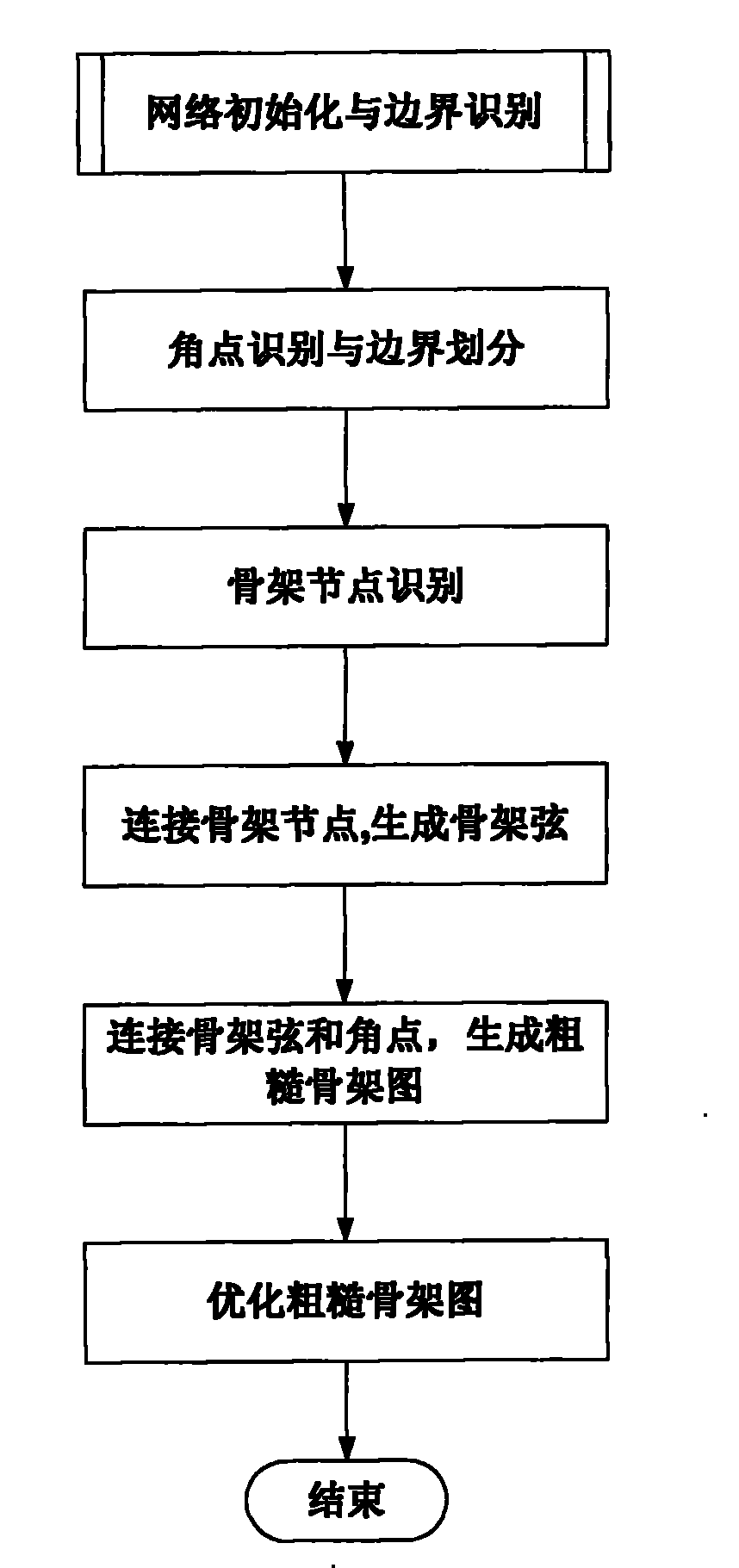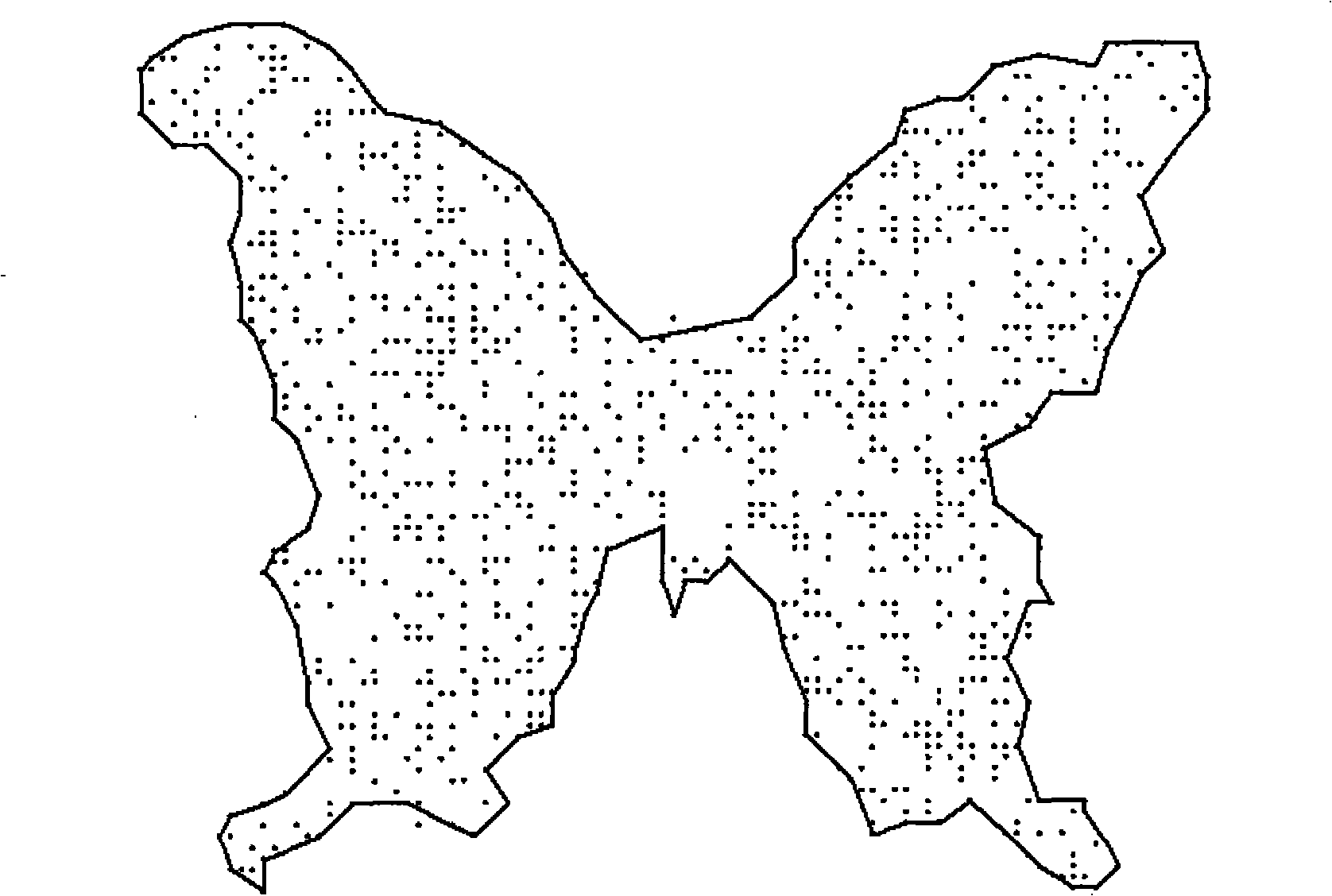Sensor network skeleton extraction method
A sensor network, skeleton extraction technology, applied in the field of wireless sensor networks, can solve the problem of unreal axis nodes and so on
- Summary
- Abstract
- Description
- Claims
- Application Information
AI Technical Summary
Problems solved by technology
Method used
Image
Examples
Embodiment Construction
[0024] In order to illustrate the present invention more clearly, the following describes it in detail in conjunction with the accompanying drawings and specific examples.
[0025] The sensor network applied in the present invention only utilizes the connection information between sensors, and we use the method in the existing literature to identify the network boundary, so it can be assumed that the boundary information of the sensor network is known.
[0026] figure 1 It is a schematic flow chart of the method of the present invention, comprising the following steps:
[0027] Step 1. Find the corner points on the network boundary
[0028] This step is mainly to pave the way for dividing the boundary of the network into a limited number of boundary branches. For any node p on the boundary, record all its h hops (h is related to the actual application and requirements, generally 2~5 hops are acceptable) and the set of neighbor nodes is N h (p), at N h The maximum distance ...
PUM
 Login to View More
Login to View More Abstract
Description
Claims
Application Information
 Login to View More
Login to View More - R&D
- Intellectual Property
- Life Sciences
- Materials
- Tech Scout
- Unparalleled Data Quality
- Higher Quality Content
- 60% Fewer Hallucinations
Browse by: Latest US Patents, China's latest patents, Technical Efficacy Thesaurus, Application Domain, Technology Topic, Popular Technical Reports.
© 2025 PatSnap. All rights reserved.Legal|Privacy policy|Modern Slavery Act Transparency Statement|Sitemap|About US| Contact US: help@patsnap.com



